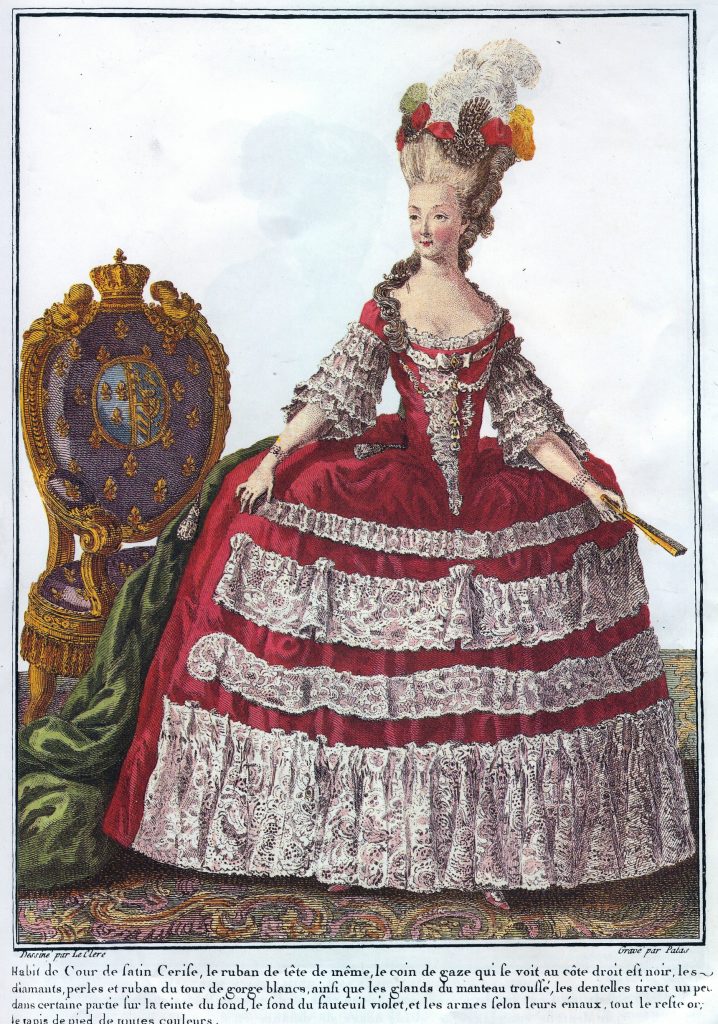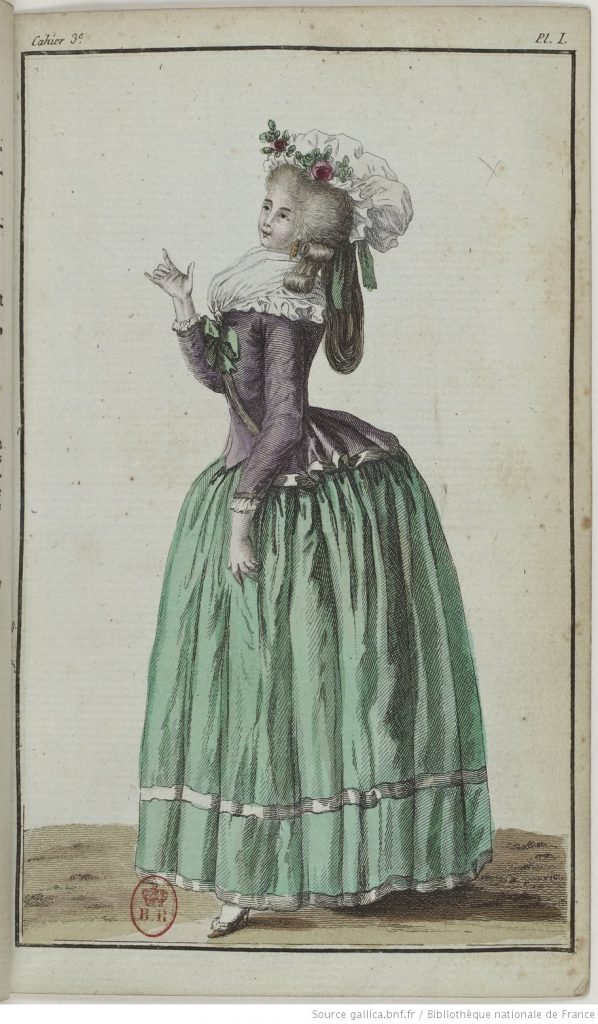33 Design Inspiration – 18th Century French Fashion Plates and Periodicals
Jacques Esnauts and Michel Rapilly created the Galerie des Modes, a series of colored fashion plates and portfolios. It was published from 1778-1787 and distributed in Paris. Over 400 plates were issued over the ten year period and were produced by prominent eighteenth century designers and engravers. Prior to that, periodicals like The Lady’s Magazine issued a few plates but none in color. And the plates prior to that, such as Monument du Costume, had been mostly of national costumes and were not necessarily of contemporary fashion. The fashion plates in La Gallerie des Modes were issued in parts of about twenty-four plates each, four parts to a volume, with five volumes in all. The first volume was entitled Gallerie des modes et des costumes français dessinés d’après nature, Gravés par le plus Célèbres Artistes en ce genre, et colorés avec le plus grand soin par Madame Le Beau. Ouvrage commence en l’année 1778. A Paris, chez le Srs Esnauts et Rapilly rue St. Jacques à la Ville de coutances. Avec priv. Du Roi (Gallery of French fashions and costumes, drawn from life, engraved by the most celebrated artists in this medium, and hand-colored with the greatest care by Madame Le Beau;publication begun in 1778. Paris, Messrs. Esnauts and Rapilly, rue Satin-Jacques, at the sign of the City of Countances. Licensed by the King). Many of the models in the series resembled or directly represented Marie Antoinette, a testament to the public’s fascination with the Queen and her fashions.
In 1911 Emile Lévy published a reproduction of the Galerie des Modes, re engraving the plates and coloring them by hand as were the original. The hat plates were omitted, but 325 of the known 343 original plates were included.

Le Cabinet des Modes (later renamed Magasin des Modes Nouvelles, Françaises et Anglaises) published from 1785 to 1789 by Jean-Antoine Le Brun, was considered the first major French fashion journal. The magazine contained three colored plates per issue on a biweekly basis. By this point, however, Marie Antoinette had begun to pare down her look, appearing in more simplified clothing, which the public found objectionable on the basis that it was not befitting royalty. Nevertheless, the Queen’s style continued to inspire the fashions in magazines such as Magasin des Modes. Outfits that she wore at the Petit Trianon found their way into the pages of the magazine despite the public’s outward disapproval of such clothing being worn by the Queen.

Bibliography of Sources:
Holland, Vyvyan. Hand Coloured Fashion Plates 1770 to 1899. London: B. T. Batsford LTD, 1955.
Weber, Caroline. Queen of Fashion: What Marie Antoinette Wore to the Revolution. New York: Henry Holt and Company, 2006.
Image Citations:
Fig.1. Marie-Antoinette in a grand habit de cour. 1778, color engraving. From: Stella Blum. Eighteenth-Century French Fashion Plates in Full Color. New York: Dover Publications, 1982. Plate 13.
Fig.2. Cabinet des modes, ou les Modes nouvelles, décrites d’une manière claire & précise, & représentées par des planches en taille-douce, enluminées.18th century, color engraving. Bibliothèque nationale de France, département Philosophie, histoire, sciences de l’homme, Paris. From: Bibliothèque nationale de France. Accessed May 21, 2019. département Philosophie, histoire, sciences de l’homme: https://gallica.bnf.fr/ark:/12148/bpt6k10400431.


Feedback/Errata